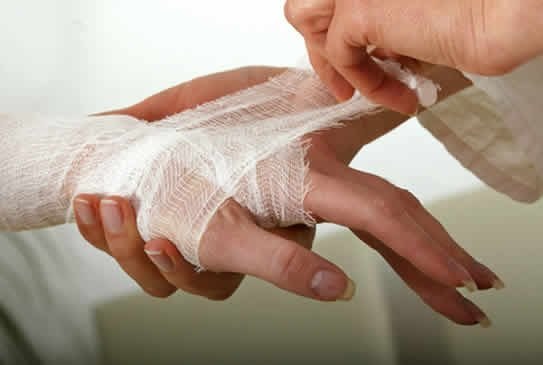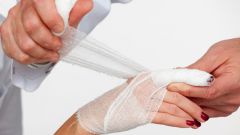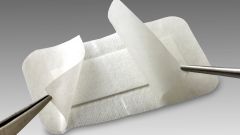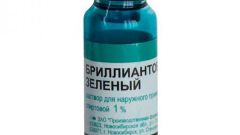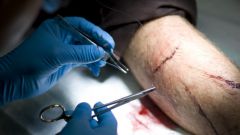Instruction
1
The basis of getting deep the damage is a treatment that is a simple but unpleasant procedure. Proper treatment prevents complications and shortens the healing time of the injury.
2
Pre-wash your hands thoroughly so as not to put in a wound infection. Take cotton wool, gauze, bandages and any disinfectant, which can be hydrogen peroxide, iodine or brilliant green.
3
First and foremost stop the bleeding, and then bandage the damage. To do this, cut a small piece of gauze, roll a few times, soak it with hydrogen peroxide and briefly put on a bleeding wound. It will not cause pain.
4
Bleeding from damaged blood vessels often stop on their own, due to the fact that the blood is capable of clotting, but this happens only if the bleeding capillary. In this case, clots of coagulated blood clog the openings of the vessels encountered in the wound. At a deeper wound usually begins venous bleeding that can be identified by the dark color of blood. Stop him with the help of a pressure bandage. To do this, apply a clean gauze, then undeployed the bandage, or clean handkerchief. Press the ends of the damaged blood vessels and the bleeding will stop. However, a pressure bandage cannot be left for more than one hour, so that the fabric can mertveci. Gradually loosen it.
5
Then the skin around the damaged area, treat with iodine or brilliant green several times, this will prevent bacteria from the surrounding skin to penetrate deep into the wound. When handling do not use ointments or powders directly to the damage can not be imposed wool. First, put a clean piece of gauze, folded in 2-3слоя, then wool, then wound a bandage carefully.
6
Don't need deep wound rinse with water, iodine or alcohol, as disinfectant solution caught in the open wound, and promotes the death of damaged cells, causing severe pain.
Note
In the absence of disinfectant for first aid, just cover with a clean piece of gauze bleeding from top, apply a thick layer of cotton wool and bandage.
Useful advice
If at hand was not a bandage or gauze, it will be enough to put on top of the damage bactericidal plaster.
